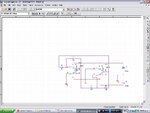goldsmith
Advanced Member level 6

- Joined
- Dec 14, 2010
- Messages
- 3,981
- Helped
- 741
- Reputation
- 1,486
- Reaction score
- 726
- Trophy points
- 1,413
- Location
- Tehran - IRAN
- Activity points
- 24,546
Hi My friends
I want to design a sine wave generator with variable frequency ( and agreeable amplitude about
-+15volt) .
and variable frequency from 0.1HZ up to 2MHZ . what should i do?
Is it possible that you guide me please?
All the best
Goldsmith
I want to design a sine wave generator with variable frequency ( and agreeable amplitude about
-+15volt) .
and variable frequency from 0.1HZ up to 2MHZ . what should i do?
Is it possible that you guide me please?
All the best
Goldsmith




